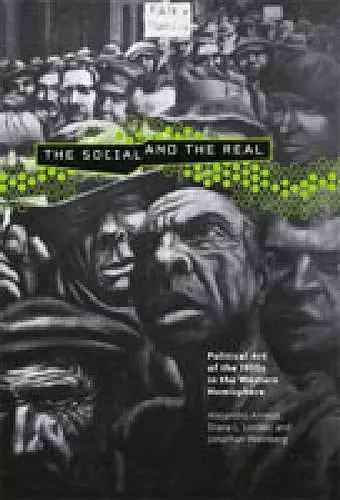The Social and the Real
Political Art of the 1930s in the Western Hemisphere
Jonathan Weinberg editor Alejandro Anreus editor Diana L Linden editor
Format:Paperback
Publisher:Pennsylvania State University Press
Published:15th Feb '06
Currently unavailable, and unfortunately no date known when it will be back

During the 1930s, American artists such as Ben Shahn developed a mode of representation generally known as Social Realism. This term is given broad new meaning in the anthology brought together by Alejandro Anreus, Diana L. Linden, and Jonathan Weinberg. They and their collaborators argue that artists of the Depression era believed that their art became “realistic” by engaging the great economic and political issues of society. Through fresh investigation of the visual culture of the 1930s—painting, sculpture, photography, and the graphic arts—the anthology illuminates the struggle for social justice that led artists to embrace leftist ideologies and fashion an art aimed at revealing the harsh realities of contemporary life.
In sharp contrast to earlier studies, The Social and the Real contends that the radical, “realistic” art of the Americas during the 1930s was shaped as much by hemispheric exchange as by emulation of the European avant-garde. Alan Trachtenberg, Mary K. Coffey, and the book’s other essayists consider Canadian art alongside art from the United States, the Caribbean, and as far south as Argentina. Some of the artists they discuss, like Philip Evergood or Dorthea Lange, are well known; others—the Argentinean Antonio Berni or the Canadian Parakeva Clark—deserve wider recognition. Situating such artists within the context of Pan-American exchange transforms the structure of the art-historical field. It also produces major new insights. The rise of Social Realism, for instance, is traced back not to the United States in the 1930s, but instead to the Mexico of the early 1920s.
The Social and the Real makes an assessment of Social Realism that is comprehensive as well as groundbreaking. The opening essays deal with “reality and authenticity” in representation of “the nation.” Subsequent essays consider portrayals of manhood, labor, lynching, and people pushed to the margins of society because of religious or ethnic identity. The volume concludes with a pair of essays—one on artists’ links with Communism, the other on the portrayal of Franklin Delano Roosevelt’s physical infirmity— that carry the discussion of Social Realism into the postwar period.
The Social and the Real is the first anthology to deal with the painting, sculpture, graphic arts, and photography of the 1930s in a hemispheric context. We take as axiomatic Cuban poet, journalist, and political theorist José Martí’s...
“The Social and the Real looks at 1930s art in a hemispheric context and fills a very real need. . . . Taken individually, the essays . . . represent important contributions to scholarship. . . Considered together, they enlarge in striking and unanticipated ways our understanding of the art of this period.”
—Alan Wallach, William and Mary College
“The 14 eclectic essays focus on a single topic—an artist, movement, or subject. All reveal fascinating facts and analyses that incrementally add to a better understanding of this period.”
—Lincoln Cushing The Americas
“This collections approach proves quite refreshing, lending more legitimacy to the study of a still-neglected phase of art history. [Other] essays in this welcome volume add the issues of race and sexuality to the discussion of social realism in the United States and Canada. Most readers will come away from this book with a clearer view of political art as a hemispheric phenomenon.”
—Patrick Frank Hispanic American Historical Review
ISBN: 9780271026916
Dimensions: 241mm x 178mm x 31mm
Weight: 1361g
384 pages